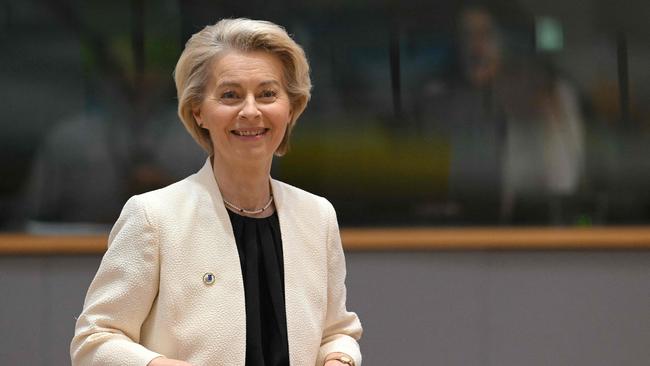I’ve never been able since to track down who said it, but the truth of the observation struck me.
Donald Trump’s plans to up-end the global trading system by imposing hefty tariffs on even US allies have shocked and infuriated elite opinion everywhere. So has his refusal to offer formal security guarantees to Ukraine and seeming total lack of interest in continuing the US-led proxy war with Russia.
While Trump’s rhetorical justifications vary, these policies likely have the same underlying economic cause. The American fiscal position is diabolically bad.
Washington simply can’t afford to support another forever war in Ukraine, quite aside from the likely loss of life that ultimately includes US troops.
The tsunami of TDS (Trump derangement syndrome) that has crashed over newsrooms right and left in recent weeks has left the public largely clueless about this undeniable fact.
The US has World War II levels of debt without having remotely fought a world war. Public debt as a share of GDP in the US is already 100 per cent and on track for 118 per cent within a decade, according to the Congressional Budget Office. Spending on interest already exceeds spending on the military. US budget deficits of $US2 trillion ($3.1 trillion) a year, more than 6 per cent of GDP, have been pencilled in as far as the eye can see.
As the minter of the world’s reserve currency the US can get away with such profligacy for a lot longer than other nations but not forever. The Afghanistan quagmire cost the US more than $US1 trillion across 20 years according to estimates from Brown University. Imagine the cost of a conventional war with Russia on the other side of the world.
Similarly, Trump’s highly controversial plans to jack up tariffs can be seen as a covert way to raise revenues without resorting to politically toxic tax increases.
Indeed, Republicans can even say tariffs are not about revenue but the politically appealing goal of “bringing jobs home”, however much economists may dispute that likelihood. Think of the tariffs as a consumption tax that would never be passed by a Republican-controlled Senate.
In 2024 the Washington-based Tax Foundation estimated that a 20 per cent universal tariff, the sort of which Trump has proposed repeatedly, would raise more than $US3 trillion across the decade to 2035. That’s serious money, enough to at least dent the extraordinary $US2 trillion in annual deficits Washington has pencilled in for years.
Choose tariffs or fiscal collapse, they are the only two choices.
Far from expanding its military footprint, the Pentagon is planning cuts of about 8 per cent a year to the nearly $US1 trillion annual military budget. And Trump has flagged pursuing a three-way agreement with China and Russia to curb spending on nuclear weapons. Economic reality is starting to bite hard.
Europe is in no better economic position to fight. European Commission president Ursula von der Leyen has announced €800bn ($1.3 trillion) of new spending on military equipment to bolster the bloc’s emaciated, inexperienced forces. Bond yields on the vast quantum of German, French and British debt have jumped significantly already. Where is this money going to come from? The likeliest answer is inflationary money creation.

When economics does enter the debate about support for Ukraine or tariffs it’s at a rather superficial level. When a market as big and lucrative as the US imposes tariffs, some of the tariff burden will indeed fall on foreigners, who will cut the prices of their exports to absorb part of the tariff to remain competitive against US domestic rivals.
Simplistic comparisons between Russia’s relatively small GDP and that of the EU and the US also are misleading.
First, relatively poor nations tend to be more formidable adversaries because their citizens tend to be more patriotic and therefore far more willing to fight. Russia hasn’t yet had to resort to mass conscription (the 2022 partial mobilisation called up reserves) in its war in Ukraine.
The governments of France, Germany and Britain, widely loathed by their voting publics, would have a much harder time finding proportionately similar numbers without civil unrest.
Furthermore, bloated Western governments, whose economies are based mostly on household consumption, have already lifted taxes to almost the maximum level their economies can bear.
They are in no position to wage a serious or sustained war without huge and politically disastrous spending cuts.
Indeed, the top marginal income tax rates of totalitarian Russia and communist China are both lower, significantly so in Russia’s case, than those in Australia, Europe and even the US: 22 per cent in Russia (where most Russians pay 13 per cent) and 45 per cent in China, a little below Australia’s top 47 per cent rate.
The stock of debt, accumulation of which is a necessity in wartime, is revealing too: China’s is significant at about 90 per cent, but Russia’s is barely 20 per cent.
A strong case can be made that economic exigencies, especially the parlous state of the US budget, are dictating Trump’s most controversial policies. Even his tough line on immigration, including plans to deport millions of low-skilled workers, has been cast as a push to crack down on crime or even a cultural preservation exercise.
But it could equally be a policy to put upward pressure on US wages, especially of low-skilled workers, to offset some of the impact of looming tariffs.
The most proximate cause of our fiscal poverty, and all the unfortunate policies arising from it, was the crazy response to Covid that severely weakened Western nations economically.
The same people who cheered those policies are often the same ones demanding the US fund a forever war in Europe. You can’t have everything, I’m afraid.
Adam Creighton is a senior fellow at the Institute of Public Affairs.






Decades ago I read a quote from a sage who opined that politics was a product of economics, and economics, in turn, a product of the human condition – or something along those lines.